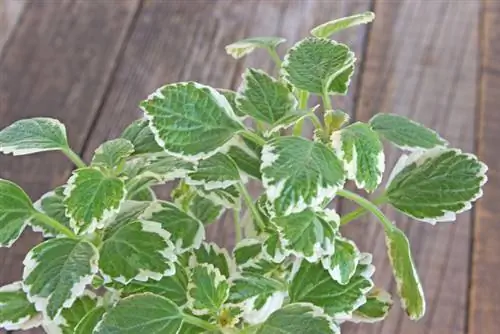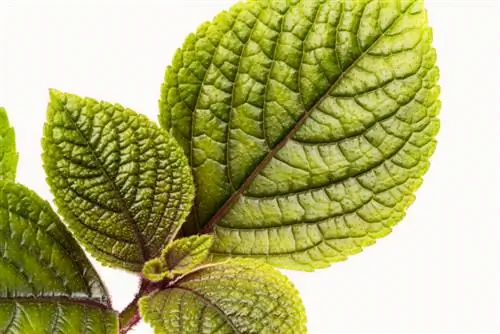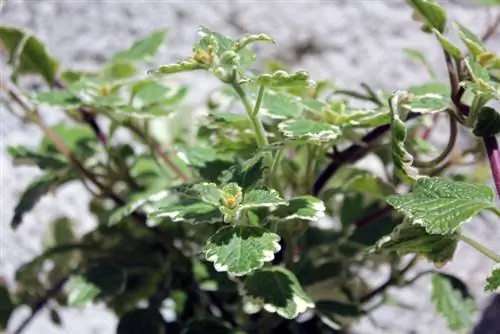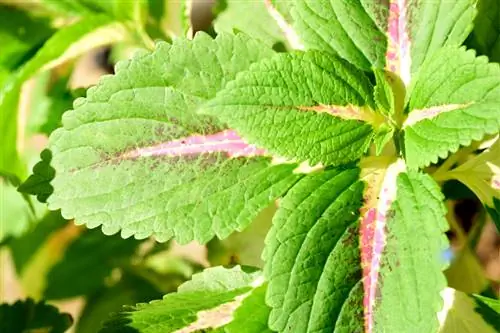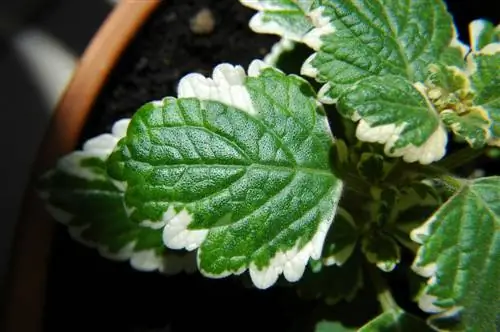- Author admin [email protected].
- Public 2023-12-25 17:45.
- Last modified 2025-01-23 11:21.
Caring for incense plants is not particularly difficult. What you need to consider when caring for the popular ornamental plant for balconies and terraces. Attention: This is the frankincense plant (Plectranthus), which should not be confused with the frankincense tree (Boswellia).
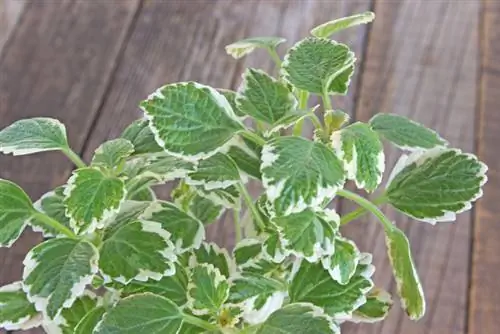
How do you properly care for an incense plant?
Proper care for an incense plant includes regular watering with soft, stale water, occasional fertilizing, careful cutting, repotting for perennial plants, overwintering in a frost-free, bright room and checking for possible pests such as aphids and spider mites.
How do you water the frankincense plant correctly?
The frankincense plant likes it slightly moist, but cannot tolerate waterlogging. Water regularly, preferably penetratingly, especially for plants that are kept hanging in hanging baskets.
Do not leave water standing in the saucer or planter. Incense plants prefer soft, stale water. If possible, use rainwater for watering.
Do frankincense plants need to be fertilized?
The nutrient requirements are not very high. Freshly repotted frankincense plants are not fertilized. Later, give normal liquid fertilizer (€13.00 on Amazon) every three to four weeks. However, fertilizing is not absolutely necessary.
Are you allowed to cut an incense plant?
You can cut incense plants at any time. In particular, shoots that are too long are shortened. Avoid cutting directly into old wood on older plants.
Short shoots can be used very well for propagating the frankincense plant.
Is repotting necessary?
If you only keep the frankincense plant as an annual, repotting is not necessary. Perennial plants are repotted when the frankincense plants are removed from their winter quarters. The old substrate should be replaced.
Are there any diseases or pests to watch out for?
The frankincense plant is very robust. Diseases occur very rarely. Pest infestations are also not common because of the strong smell. However, you should occasionally place the plants on
- Aphids
- Spider mites
- Whiteflies
investigate. Infected plants should be treated or, better yet, disposed of immediately.
How is the frankincense plant overwintered?
The non-poisonous frankincense plant is not hardy and must be kept frost-free indoors over the winter. Place the flower box in a bright place where the temperature is at least ten degrees. During the winter there is very little watering and no fertilization.
After the winter break, the frankincense plant slowly gets used to warmer temperatures and more light.
Tip
Incense plants are primarily grown on the balcony or terrace. It is also possible to care for it as a houseplant, but is not necessarily recommended because of the strong smell.

